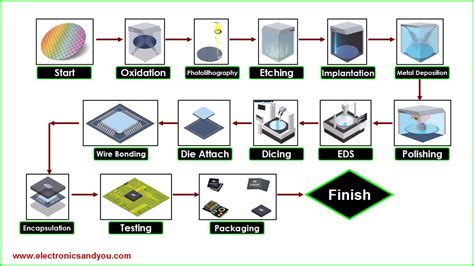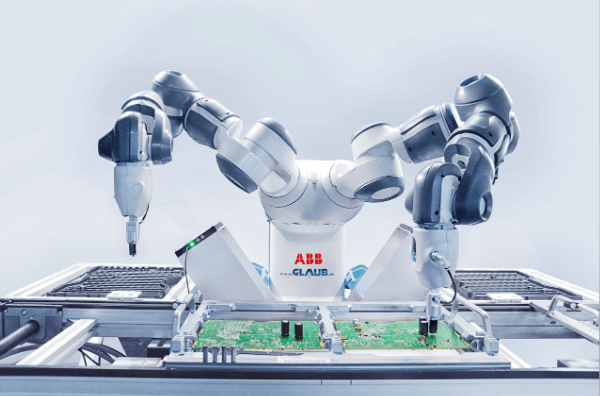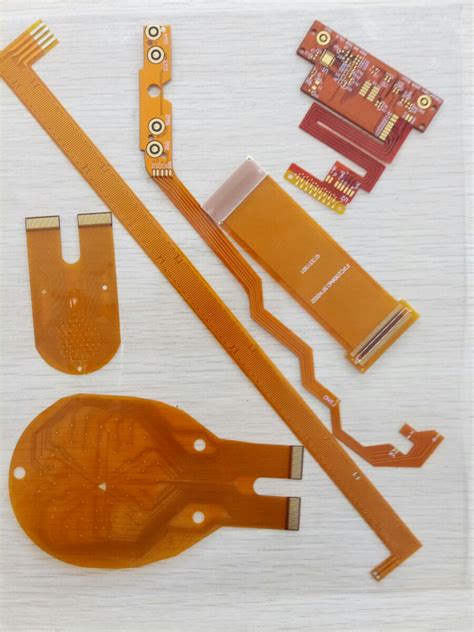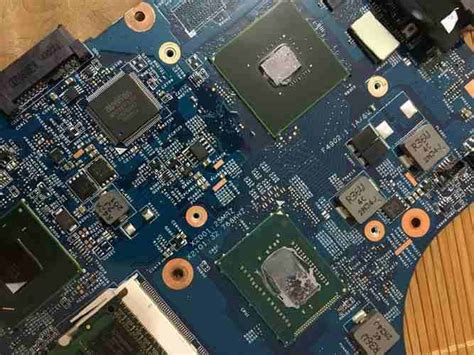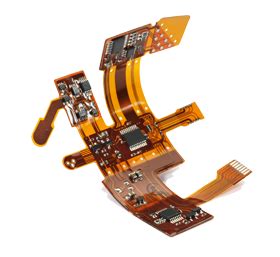Revolutionizing Innovation: The Future of Circuit Manufacturing
Key Takeaways
In the ever-evolving landscape of circuit manufacturing, you can witness a plethora of innovations driving the industry forward. Understanding the pcb manufacturing process is crucial for recognizing how pcb manufacturing companies are not just reacting to changes but actively shaping the future. The integration of cutting-edge technologies is pivotal; sophisticated software and machinery enable precise designs and rapid prototyping, significantly reducing the pcb manufacturing cost. You may also observe a trend towards automation, which streamlines operations resulting in more efficient production cycles. Moreover, as sustainability becomes a priority, innovative practices are being adopted to minimize waste and energy consumption in the pcb manufacturing business. By staying informed about these advancements, you can better appreciate how these companies are not only improving quality standards but also ensuring they can meet increasing market demands with agility and reliability. The fusion of technology and sustainable practices marks a transformative period in circuit manufacturing, opening doors to unprecedented possibilities that ultimately benefit you as a consumer and professional alike.
The Evolution of Circuit Manufacturing: A Historical Perspective
The journey of pcb manufacturing has evolved dramatically, reflecting the rapid technological advancements and increased market demands. Initially, pcb manufacturing companies relied on rudimentary techniques that limited the complexity and functionality of circuit boards. However, as the industry has matured, innovative practices have emerged that have fundamentally transformed the landscape. Early production processes were labor-intensive and time-consuming, resulting in higher pcb manufacturing costs. As you delve deeper into the history, you will notice a switch from manual assembly to more sophisticated automated processes that not only enhanced efficiency but also improved accuracy in product quality.
In understanding the historical perspective, one can see how the shift to advanced technologies—such as surface mount technology (SMT) and computer-aided design (CAD)—has revolutionized the pcb manufacturing business. These innovations have allowed for more intricate designs and higher-performance capabilities in modern applications. Furthermore, as you explore trends over the decades, you’ll find that methods have gradually moved towards integrating sustainability practices to address both environmental concerns and operational costs.
| Year | Key Innovation | Impact on PCB Manufacturing |
|---|---|---|
| 1960s | Manual Assembly | High labor costs; limited complexity |
| 1980s | Introduction of SMT | Decreased production time; increased density |
| 1990s | CAD Software Integration | Enhanced design capabilities; reduced errors |
| 2000s | Rise of Automation | Improved efficiency and accuracy |
This historical insight highlights how changes in technology and methodologies have collectively shaped today’s circuit manufacturing landscape. By studying these trends, you can better appreciate how pcb manufacturing continues to innovate while addressing both competitive pressures and evolving consumer needs.
Advanced Technologies Shaping the Future of Circuit Manufacturing
In the evolving landscape of circuit manufacturing, several advanced technologies are significantly influencing the way pcb manufacturing companies operate. The integration of automation, for instance, plays a pivotal role in streamlining production processes, thereby reducing pcb manufacturing costs and enhancing overall efficiency. You will notice that many companies are now utilizing advanced robotics and artificial intelligence to increase precision in their operations. These innovations not only allow for faster turnaround times but also contribute to higher-quality outputs, ensuring that your products meet stringent industry standards. Moreover, advancements in materials science have paved the way for the development of flexible boards and high-frequency circuits, enabling you to explore new applications and markets. As a stakeholder in the pcb manufacturing business, staying abreast of these technological advancements is essential for maintaining a competitive edge and meeting the dynamic demands of your customers. By adopting these cutting-edge techniques, you can significantly enhance your production capabilities while also positioning your business for future growth in an increasingly complex market environment.
Streamlining Processes: Efficiency in Circuit Production
In the rapidly evolving landscape of circuit manufacturing, achieving efficiency in production processes is paramount for success. As you engage with pcb manufacturing companies, you may find that implementing advanced methodologies can significantly reduce pcb manufacturing costs while improving overall output quality. For instance, adopting lean manufacturing principles can help eliminate waste, streamline workflows, and ensure that resources are utilized optimally. By focusing on the integration of innovative technologies, such as automation and real-time data analytics, your pcb manufacturing business can enhance its operational effectiveness.
It’s essential to remember that the efficiency of production processes not only impacts your bottom line but also influences customer satisfaction and market competitiveness. For tips on optimizing your production processes, consider reaching out to industry leaders or consulting firms that specialize in pcb manufacturing.
“Adapting to modern challenges in circuit production requires a commitment to continuous improvement and innovation.”
By staying ahead of these trends, your company will be better positioned to respond swiftly to shifts in market demand and enhance its reputation as a provider of high-quality products. To explore more about best practices in circuit manufacturing and how they can benefit your operations, visit Andwin Circuit.
Sustainability in Circuit Manufacturing: Best Practices and Innovations
In today’s rapidly evolving industrial landscape, sustainability has become a crucial focal point for pcb manufacturing companies. Embracing sustainable practices enables you to reduce your overall pcb manufacturing cost while also positively impacting the environment. It is essential to adopt innovative strategies that minimize waste, optimize resource use, and incorporate eco-friendly materials into the pcb manufacturing business model.
One effective approach is the implementation of green technology, which focuses on using renewable energy sources and reducing emissions during production. This not only aligns with global sustainability goals but can also attract customers who increasingly value environmental responsibility. Additionally, adopting efficient recycling processes for electronic waste can play a pivotal role in mitigating environmental impact.
Another best practice for sustainability involves collaborating with your supply chain partners to develop more efficient logistics and distribution methods. By optimizing transport routes and reducing packaging waste, you enhance not just your sustainability efforts but also your operational efficiency. Such innovations help ensure that your pcb manufacturing processes are not only economically viable but also environmentally sound, paving the way for a responsible future in circuit production.
By investing in sustainable practices and advanced technologies, you position yourself as a leader in the market of circuit manufacturing, thus paving the way for long-term success while preserving our planet’s vital resources.
Quality Control Measures in Modern Circuit Manufacturing
In the realm of pcb manufacturing, stringent quality control measures are paramount to ensuring the longevity and reliability of electronic circuits. As you delve into the practices employed by pcb manufacturing companies, you will discover that these measures encompass a wide range of techniques aimed at minimizing defects and ensuring compliance with industry standards. From initial design validation to final product testing, each step incorporates robust methodologies that guarantee performance excellence.
One of the crucial aspects involves thorough inspections at various stages of the pcb manufacturing business process, including electronic testing and visual inspections. This proactive approach not only helps in identifying potential issues early but also plays a significant role in managing the overall pcb manufacturing cost by preventing costly reworks or recalls. Automated inspection systems, employing advanced technologies such as machine vision, are increasingly adopted to enhance precision and efficiency.
Moreover, statistical process control (SPC) techniques are employed to monitor production runs continuously, ensuring that all processes stay within established control limits. By analyzing data trends, you can identify anomalies that may indicate underlying problems in production that need addressing before they escalate into more significant issues.
Ultimately, effective quality control ensures that products meet the necessary specifications while supporting sustainable practices by reducing waste and enhancing the overall efficiency of operations. As you explore modern circuit manufacturing, understanding these quality measures provides valuable insights into maintaining high standards and fostering innovation within your organization.
The Role of Automation in Enhancing Production Capabilities
In the rapidly evolving realm of circuit manufacturing, automation has emerged as a fundamental driver of production efficiency and quality. By integrating advanced machinery and intelligent systems, pcb manufacturing companies can significantly reduce production times, minimize human error, and optimize workflows. This shift towards automation not only enhances the speed of the pcb manufacturing business, but it also allows for greater precision in creating intricate circuit designs. As you consider your options in this field, it’s crucial to understand how embracing automation can lead to a more streamlined operation and lower pcb manufacturing costs. With robotic systems capable of handling repetitive tasks, your workforce is free to focus on more complex problem-solving activities, leading to innovation and improved workplace satisfaction. In the end, investing in automation means you are not only keeping up with industry standards but also positioning your business for future growth opportunities in the competitive landscape of pcb manufacturing.
Meeting Market Demands: Adapting to Changes in the Industry
In today’s fast-paced technological landscape, pcb manufacturing companies must demonstrate agility and adaptability to meet the evolving demands of the market. As you seek to understand how these businesses navigate challenges, it’s evident that keeping ahead of trends is essential. With advancements in pcb manufacturing technologies, companies can optimize their production lines, thereby reducing pcb manufacturing costs and enhancing turnaround times. Focused on the principles of efficiency and innovation, these companies leverage automation tools that facilitate a smoother workflow, allowing for quicker responses to customer needs. Moreover, the rise of sustainable practices within the pcb manufacturing business not only appeals to environmentally conscious consumers but also helps in building a reputation for quality and reliability. Therefore, being informed about these shifts equips you with insights into how pcb manufacturing is reshaping the industry landscape while fostering greater resilience against market fluctuations.
Future Trends: What’s Next for Circuit Manufacturing Companies
As you navigate the landscape of pcb manufacturing, it’s essential to consider the emerging trends that will shape the future of pcb manufacturing companies. One significant trend is the rise of smart manufacturing, where automation and artificial intelligence streamline operations, enhancing productivity and reducing costs. You’ll find that the integration of advanced technologies is not only improving efficiency but also enabling greater customization in design, allowing companies to better meet unique consumer demands. Additionally, consider how sustainability is becoming a core focus in the pcb manufacturing business, with companies exploring eco-friendly materials and processes. The shift towards sustainable practices not only aids in compliance with global regulations but also appeals to a more environmentally conscious market. Furthermore, as competition intensifies, understanding your positioning relative to pcb manufacturing costs will be critical for maintaining profitability and fostering innovation. By staying attuned to these trends, you can better prepare your business for the evolving demands of the industry and harness opportunities that arise from these transformative changes.
Conclusion
As you reflect on the rapid advancements in pcb manufacturing and the transformative role that pcb manufacturing companies play in this industry, it’s essential to recognize the synergy between cutting-edge technologies and sustainable practices. The landscape is evolving, with many manufacturers adopting innovative techniques that not only enhance efficiency but also drastically reduce the pcb manufacturing cost. By prioritizing quality control measures and embracing automation, these companies are not simply meeting market demands; they are anticipating future trends and setting new standards for excellence. This proactive approach positions your business to thrive in an ever-changing environment, where understanding the nuances of the pcb manufacturing business becomes crucial for staying competitive. As we look towards the future, it is evident that these advancements will continue to pave the way for remarkable improvements in product quality, speed of production, and ecological responsibility.
FAQs
What is PCB manufacturing?
PCB manufacturing refers to the process of designing and producing printed circuit boards (PCBs), which serve as the foundation for most electronic devices, facilitating the interconnections of various electronic components.
How do PCB manufacturing companies ensure quality?
Quality is primarily ensured through rigorous quality control measures, which include inspections and tests at various stages of production, ensuring that every printed circuit board meets the necessary standards before it reaches the market.
What factors affect PCB manufacturing cost?
Several factors can influence PCB manufacturing costs, including material selection, production volume, complexity of the design, and any added features like finish or surface mount technology. A clear understanding of these factors can help you manage your budget effectively.
How can I start a PCB manufacturing business?
Starting a PCB manufacturing business typically involves market research, understanding compliance regulations, sourcing materials and machinery, and establishing connections with suppliers and customers to create a robust production chain.
What are the latest trends in PCB manufacturing?
Recent trends include the adoption of advanced technologies such as automation and AI in production processes. There is also a growing focus on sustainable practices to minimize waste and energy consumption in pcb manufacturing companies, promoting long-term viability in an evolving market.

